If you’ve ever been to Tokyo, you’ve probably noticed how many neighborhoods share a similar cityscape. Yet each one carries a distinct personality and a story of its own. Among them, Shimokitazawa stands out as one of the most colorful and character-filled spots in the city.
Known affectionately as Shimokita, this laid-back neighborhood is beloved for its bohemian vibe, with cozy cafés and quirky antique shops lining the streets.
The neighborhood traces its roots back to the old Shimokitazawa Village in Ebara District, which later became part of Setagaya City. Interestingly, Shimokitazawa isn’t even an official place name: the area’s boundaries remain fluid, and the name likely emerged from distinguishing between the “upper” (kami) and “lower” (shimo) parts of the original Kitazawa village.
Whatever the origin, Shimokita has become one of Tokyo’s most beloved cultural hubs. Vibrant, creative, and still flying a little under the radar for many visitors. Just a short ride from Shibuya via the Odakyu or Keio Inokashira Line, it’s easy to reach but feels like a world apart.
Often celebrated as a vintage shopping haven, Shimokita is so much more than that. It’s a neighborhood where retro charm meets youthful energy, and where Tokyo’s alternative spirit is alive and thriving.
Shimokita between stage and sound
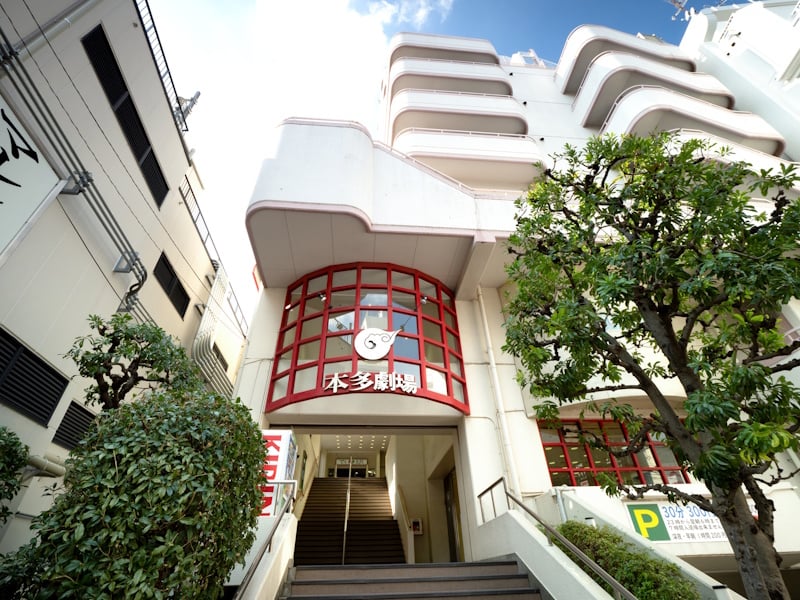 Picture: Jay Allen, Unseen Japan
Picture: Jay Allen, Unseen Japan
When people think of Shimokitazawa, they often picture racks of vintage clothes. But there’s another side to the neighborhood that’s just as essential to its character: its role as a creative center, with theaters and live music venues pulsing together at the heart of local life.
This side of Shimokita isn’t as widely known, but its roots run deep. Back in the 1980s, while much of Tokyo was charging into a new era of skyscrapers, polished shopping streets, and high-speed modernization, Shimokita was left waiting.
The cause was years of delays over elevating or rerouting the Odakyu Line. At the time, it was seen as an inconvenience. Looking back, it was a stroke of luck. The slowdown kept the neighborhood’s charm intact and gave cultural groups the breathing space to grow. As a result, it’s managed to avoid the generic overdevelopment seen in places such as Azabudai Hills or even Shibuya.
Architect Kuma Kengo described Shimokita of that era as being in a “stalled modernization, which offered a moratorium to people in existential limbo.” In other words, the neighborhood reflected the uncertainty felt by a part of that generation, becoming both a mirror and a refuge for those still finding their way.
Among them was Honda Kazuo, an actor turned entrepreneur who would transform Shimokita into Tokyo’s “theater town.” In 1981, he opened the Suzunari Theater, followed a year later by the now-famous Honda Theater. This was the era of the third-generation shōgekijō (small-scale theater) movement, and Honda embraced it fully.
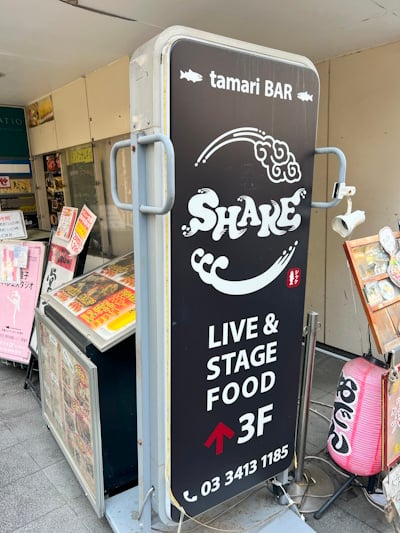 One of Shimokitazawa’s many small live-music venues. (Picture: Jay Allen, Unseen Japan)
One of Shimokitazawa’s many small live-music venues. (Picture: Jay Allen, Unseen Japan)
Today, his legacy is still very much alive: eight Honda Group theaters sit just a short walk from the station, including Theater 711, Rakuen, and OFF OFF Theater. With only about 100 seats, these intimate spaces turn every performance into a shared moment between actors and audience.
Around the same time, a vibrant live music scene started to flourish. Small, atmospheric venues began appearing in the late 1970s.
In Shimokita, theater and music didn’t compete. They blended, often sharing the same creative circles. One example is Oki Yumitaka, who opened the iconic jazz bar Lady Jane in 1975 after leading a theater troupe himself.
This blend of arts has helped shape Shimokitazawa’s identity just as much as its vintage fashion scene. For decades, the neighborhood has been a safe place for artists and dreamers to experiment, collaborate, and express themselves. And that spirit hasn’t gone anywhere. Rather, it’s evolved into an open, welcoming space for all cultures, identities, and generations.
Retro vibes
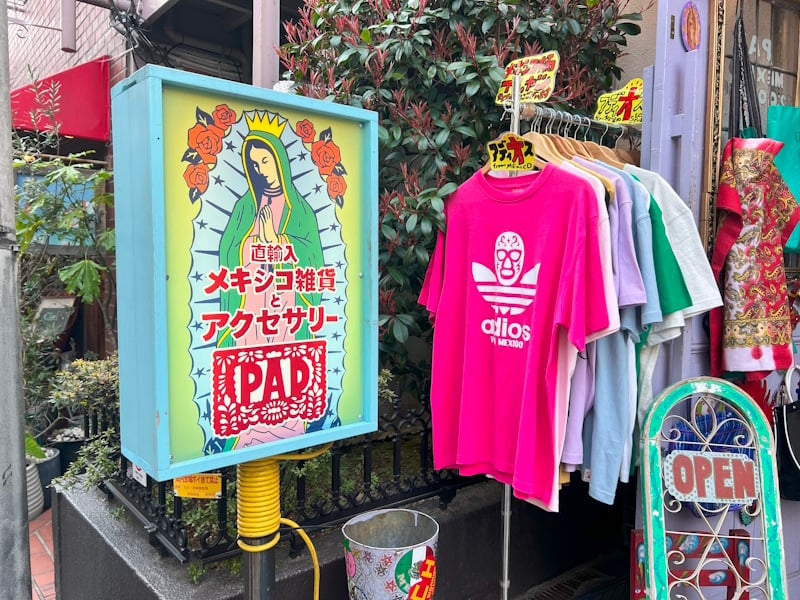 PAD(pronounced “pee-aye-dee”), a Mexican-themed clothing and accessories store in Shimokitazawa. (Picture: Jay Allen, Unseen Japan)
PAD(pronounced “pee-aye-dee”), a Mexican-themed clothing and accessories store in Shimokitazawa. (Picture: Jay Allen, Unseen Japan)
When people think of Shimokitazawa today, one image often comes to mind: a vintage and second-hand clothing paradise. Wander around its station, down narrow alleys, or main streets, and you’ll find shop after shop, from well-known names like Flamingo and Big Time to hidden gems such as Ocean BLVD.
Shimokita’s love affair with vintage has roots in the 1980s and ’90s. By then, the neighborhood had already become a magnet for artists, musicians, and students. The creative energy was there: all it needed was the spark. That came when real estate prices across central Tokyo soared, while Shimokita stayed relatively affordable. The result was a wave of shop owners and young entrepreneurs turning the neighborhood into a center for retro fashion and unique finds.
Planning a trip to Japan? Get an authentic, interpreted experience from Unseen Japan Tours and see a side of the country others miss!

“Noah [at Unseen Japan] put together an itinerary that didn’t lock us in and we could travel at our own pace. In Tokyo, he guided us personally on a walking tour. Overall, he made our Japan trip an experience not to forget.” – Kate and Simon S., Australia

See a side of Tokyo that other tourists can’t. Book a tour with Unseen Japan Tours – we’ll tailor your trip to your interests and guide you through experiences usually closed off to non-Japanese speakers.


Want more news and views from Japan? Donate $5/month ($60 one-time donation) to the Unseen Japan Journalism Fund to join Unseen Japan Insider. You’ll get our Insider newsletter with more news and deep dives, a chance to get your burning Japan questions answered, and a voice in our future editorial direction.
Unlike many central Tokyo neighborhoods filled with glossy malls and flagship stores, Shimokita stayed true to its independent, small-scale shopping culture. Even its version of a department store is refreshingly different. Toyo Department Store, opened in 2004 by Koshimizu Katsunori, for instance, houses around 20 small independent shops per floor, selling everything from vintage clothes to handmade crafts and local art.
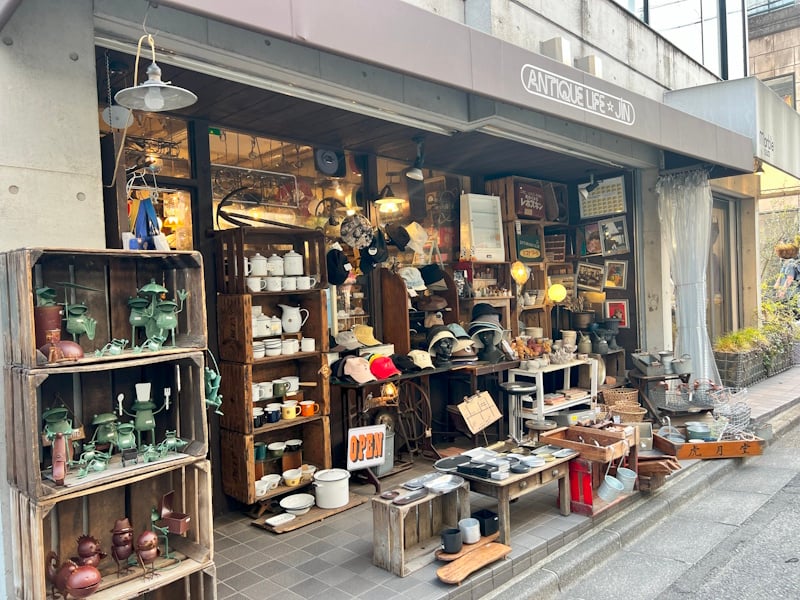 Jin, one of many of Shimokitazawa’s small (and packed) antique shops offering a balance of traditional knick-knacks and Japanese pop culture memorabilia.
Jin, one of many of Shimokitazawa’s small (and packed) antique shops offering a balance of traditional knick-knacks and Japanese pop culture memorabilia.
Today, Shimokita’s second-hand stores each have their own character and backstory. But keeping that spirit alive takes effort. As Koshimizu, now President of Toyo Kogyo Co., Ltd and Vice Chairman of the Shimokitazawa Shopping Street Promotion Association, explains:
There is always pressure from big developers. But we want to keep the spirit of the community: small, unique shops and streets where people can freely express themselves.
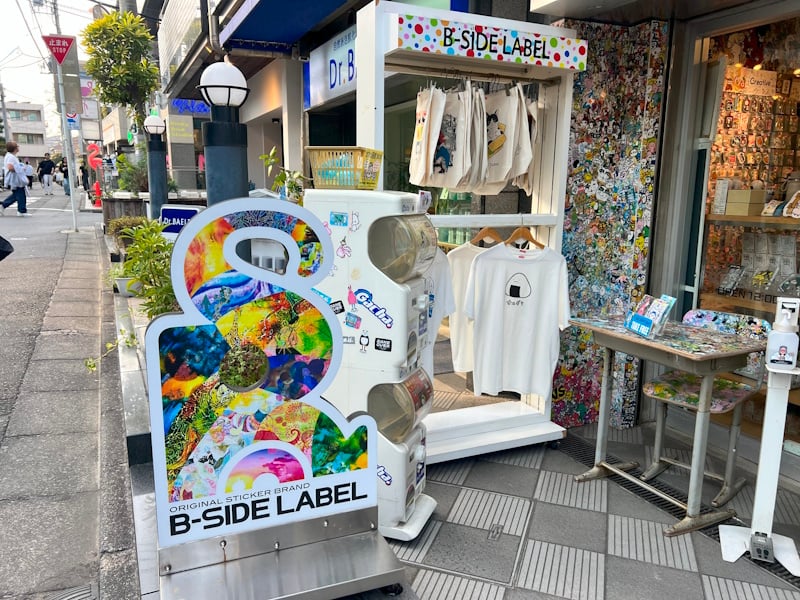 Large pop culture brand names, like sticker line B-Side Label, exist side-by-side with independent shops in Shimokita. (Picture: Jay Allen, Unseen Japan)
Large pop culture brand names, like sticker line B-Side Label, exist side-by-side with independent shops in Shimokita. (Picture: Jay Allen, Unseen Japan)
So far, that mission is paying off. The recent vintage boom, fueled by younger generations’ passion for sustainability, ethical fashion, and flea markets, has driven demand to new heights. Japan’s second-hand market reached 1.15 trillion yen in 2023, growing at a rate of 113.9% year over year. And in Shimokita, the number of vintage shops hit 200 by 2025, a trend that shows no signs of slowing down.
For visitors, it means one thing: Shimokita will keep its place as Tokyo’s go-to destination for retro fashion, and a shopping experience you simply can’t get anywhere else.
Savor Shimokita
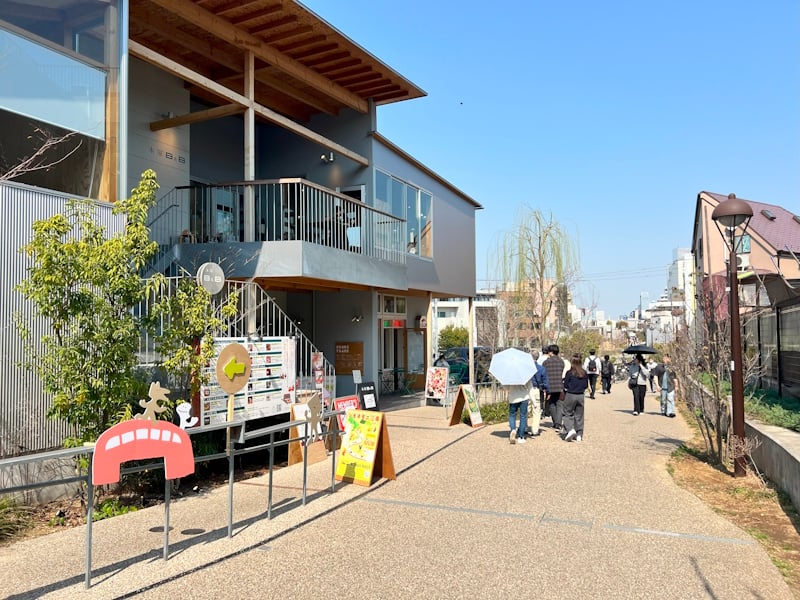 Bonus Track, a short walk from the station, is a new development that still retains the classic Shimokitazawa feel. Here you’ll find bookstores, coffee shops, restaurants, and a lively public market. (Picture: Jay Allen, Unseen Japan)
Bonus Track, a short walk from the station, is a new development that still retains the classic Shimokitazawa feel. Here you’ll find bookstores, coffee shops, restaurants, and a lively public market. (Picture: Jay Allen, Unseen Japan)
When exploring Tokyo – or really any city – culture and shopping are important. However, there’s usually one thing every visitor craves most: good food. Shimokitazawa definitely delivers on that front. You might think of trendy cafés and bakeries when you hear Shimokita, but actually, it’s the curry scene that has truly put this neighborhood on the map.
Curry is a Tokyo staple, no surprise there. Places like Kanda and Jimbocho in Chiyoda Ward are well known for it. But Shimokita holds its own. One of the oldest curry spots here is Nasu Oyaji, dating back to 1990. Founder Abe Takaaki says curry shops weren’t that common back then. But by the 2000s, they had exploded, with about 50 just near the station. These days, even izakayas and soba shops that don’t specialize in curry have it on their menus.
What truly seals Shimokita’s reputation as a curry town is its annual curry festival held each fall in October. Over 100 shops participate each year, drawing visitors from all across the city and beyond. The festival began in 2011 thanks to Iwai Yuki, an NPO staff member and event organizer at the time, and Matsuda Katsuya, a company employee now living in Okinawa, who’s affectionately nicknamed the “Curry God.”
Matsuda used to live in Shimokitazawa and would make homemade curry for the bar staff at places he frequented. According to Yomiuri Shimbun, the festival began as a fun way to help the staff improve their curry skills and serve more customers.
It was an instant hit: over 200 people showed up on the very first day. By the following year, it became an official event. By the third festival, 105 shops took part, attracting over 100,000 visitors across ten days. The neighborhood itself has become the perfect backdrop for this gathering, adding even more to Shimokita’s strong community vibe.
Where to eat in Shimokitazawa
 A quiet cup of cold-brew coffee in Shimokitazawa’s fukzue, one of Tokyo’s many book cafes. (Picture: Jay Allen, Unseen Japan)
A quiet cup of cold-brew coffee in Shimokitazawa’s fukzue, one of Tokyo’s many book cafes. (Picture: Jay Allen, Unseen Japan)
So, with so many curry options, where should you go if you want the best taste of Shimokita curry? Here are a few spots you can’t go wrong with:
Magic Spice Tokyo serves the famous Sapporo-style curry soup, with tomato- or chicken-based broth and several spice levels. It’s loaded with chunky veggies and toppings, like a warm hug in a bowl.
Planet of Curry, run by a French chef and popular online, offers a cozy and delicious variety of curries.
And don’t miss SAMA, a chain famous in Japan and abroad. Their soupy Hokkaido-style curry comes with plenty of toppings and just enough veggies for your daily vitamins.
All of this goes perfectly with Shimokitazawa’s café culture. The neighborhood is a coffee lover’s dream, full of cozy, artsy spots where you can relax, enjoy a great brew, and maybe pull out a book for the afternoon.
I asked a local coffee expert to recommend three must-visit spots. First in line is Light Up Coffee, a star in the specialty coffee scene. Known for its quality beans and relaxed atmosphere, it’s the ideal spot for a chill coffee break. Next is Bear Pond, famous for its signature “dirty coffee.” While hugely popular across Asia, this unique drink remains a rare find in Japan. And for a truly special experience, there’s The Mosque Coffee, where you can explore the rich flavors of Turkish coffee culture.
Tokyo’s quiet heart
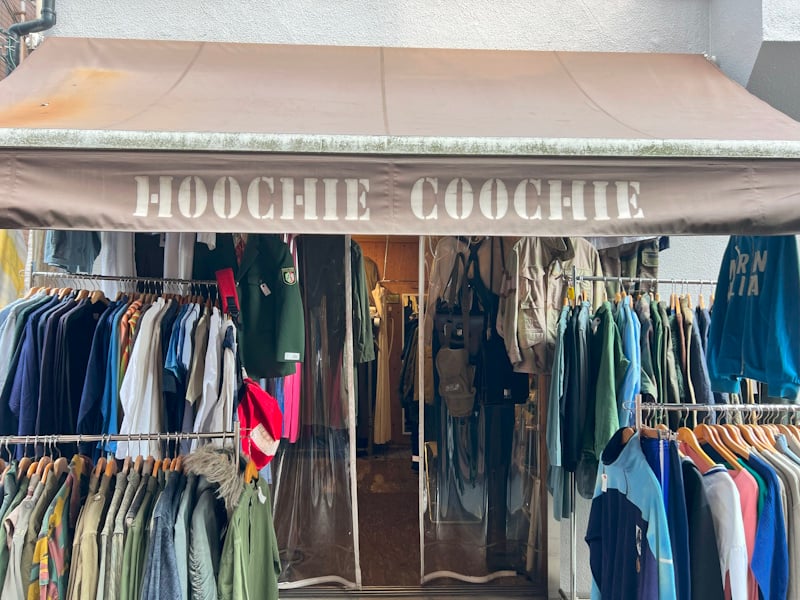 Picture: Jay Allen, Unseen Japan
Picture: Jay Allen, Unseen Japan
Shimokitazawa has so much to offer, yet it rarely makes it onto most itineraries. It might not seem like a first-timer’s must-visit, but it reveals so much about Tokyo’s complex, layered identity. Just stepping into its world of indie art, cozy spots, and retro vibes shows you a side of the city that’s far from the bright lights of Shinjuku or Shibuya.
Today, Shimokita is more than just an artsy escape from the big city buzz. It’s becoming a truly livable neighborhood. It’s down-to-earth and less pretentious than nearby Shibuya, yet still full of surprises that keep residents and visitors alert.
If you’re thinking about living here, know that Shimokita is more than an afternoon hangout. It’s deeply residential and convenient. Just a short walk from the busy shopping streets, you’ll find quiet neighborhoods that suit all ages. The area is surrounded by green spaces like the Kitazawa River Greenway, a peaceful oasis just steps from the lively streets. And if you’re here in spring, it’s a great spot to enjoy the season’s blossoms.
Planning a trip to Japan? Get an authentic, interpreted experience from Unseen Japan Tours and see a side of the country others miss!

“Noah [at Unseen Japan] put together an itinerary that didn’t lock us in and we could travel at our own pace. In Tokyo, he guided us personally on a walking tour. Overall, he made our Japan trip an experience not to forget.” – Kate and Simon S., Australia

See a side of Tokyo that other tourists can’t. Book a tour with Unseen Japan Tours – we’ll tailor your trip to your interests and guide you through experiences usually closed off to non-Japanese speakers.


Want more news and views from Japan? Donate $5/month ($60 one-time donation) to the Unseen Japan Journalism Fund to join Unseen Japan Insider. You’ll get our Insider newsletter with more news and deep dives, a chance to get your burning Japan questions answered, and a voice in our future editorial direction.
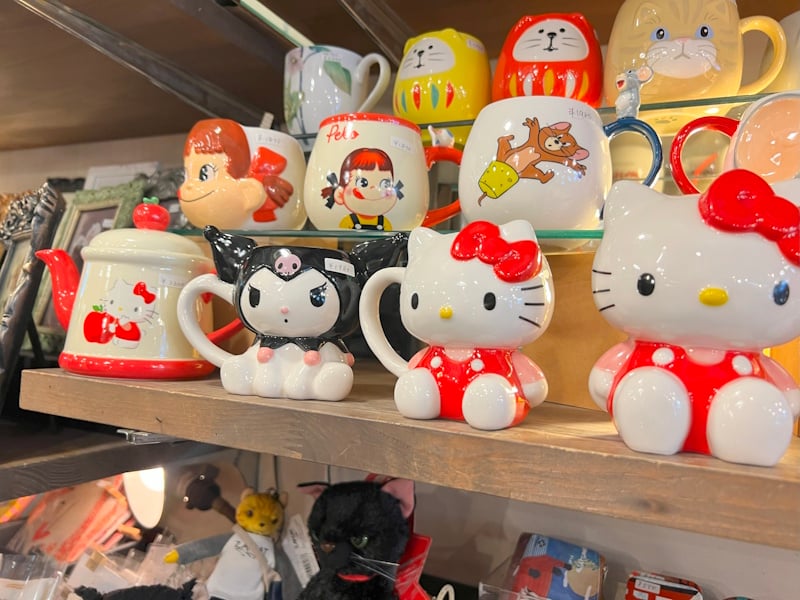 Pop culture memorabilia in Jin. (Picture: Jay Allen, Unseen Japan)
Pop culture memorabilia in Jin. (Picture: Jay Allen, Unseen Japan)
Shimokitazawa offers something for everyone: great food, unique shopping, a strong community feel, and a sense of privacy. But much of this is at risk. Urban redevelopment is challenging its independent spirit and unique identity.
This process started decades ago with the Odakyu Line elevation. That sparked the “Save the Shimokitazawa” movement, where artists and youths fought against large-scale construction around the station and plaza. The community hopes to guide this inevitable change while preserving what makes Shimokita special.
Whatever the future holds, Shimokitazawa’s free spirit lives on in the people who fill its streets. For most of them, Shimokita isn’t just a place to visit: it’s a place to belong and feel seen. And it always has been for the artists, creatives, and young people who came before.
Sources
下北沢という居場所——「まち」と「人」の相互影響に関する考察—— 京都芸術大学通信教育課程
下北沢 新旧が混在したサブカルチャーの街 Landix
古着を売って大金持ちに?――下北沢で夢見る若者の希望と過酷な現実 FNNプライムオンライン
「下北沢」はいかにして古着の聖地となりえたか? 東洋百貨店オーナーに変遷を聞く Fashion Tech News
生まれ変わる下北沢 若者が集うまちづくりのヒントは「地域との対話」 NHK
2代目は雑用係 「演劇の街」築いた下北沢・本多劇場 Nikkei
下北沢、なぜ「カレーの街」に…フェスは18日間で12万人を集める盛況 Yomiuri Shimbun
矢野経済研究所、ファッションリユース市場に関する調査結果を発表 日本経済新聞

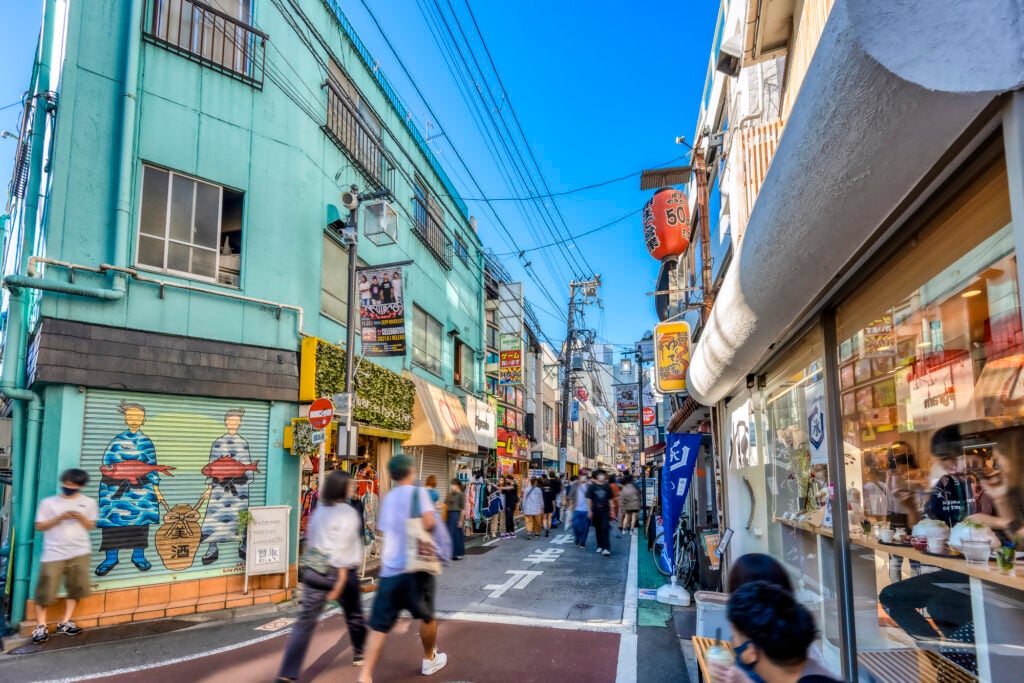
AloJapan.com